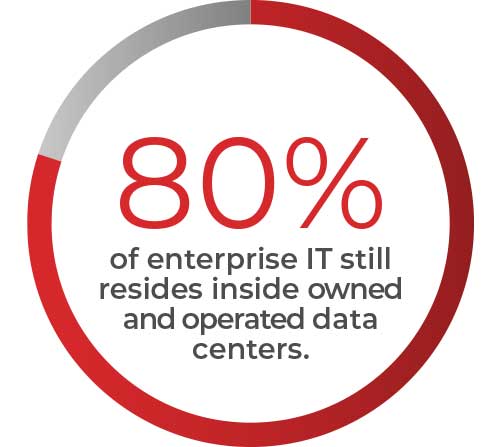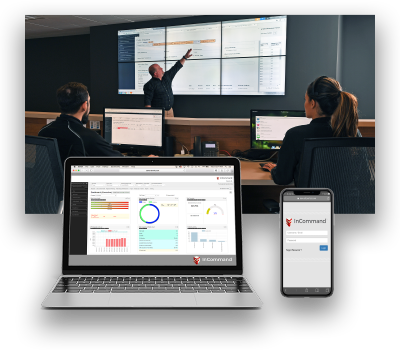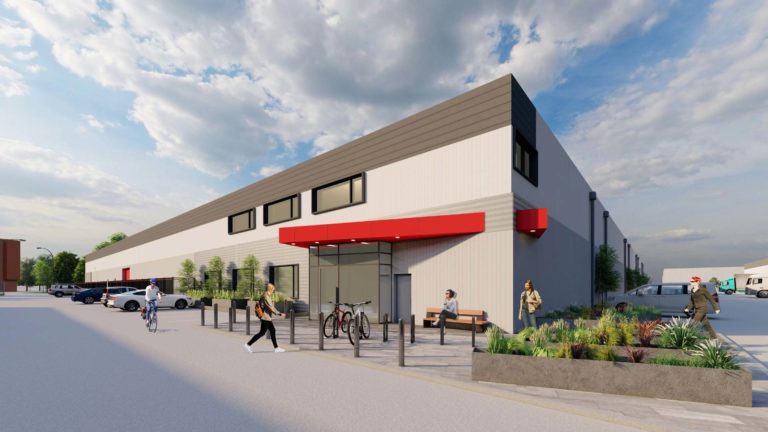The life of a CIO is complicated.
As the world transitions away from sinking capital into owned and operated infrastructure to a responsive software-driven everything-as-a-service (IAAS, PAAS, SAAS) world of pay-per-use, the CIO must address a myriad of complex issues.
These challenges extend far beyond ensuring that everything is available when needed.
And CIOs must attempt to manage these concerns in a context where business managers tend to reflect the view that everything digital should be free (or close to free), accessible and secure 24/7.
This ‘cloud only’ perspective ignores the physical environment on which 80% of enterprise IT still resides. (The vast majority of enterprise workloads are still being handled by owned and operated data centers with all of the associated legacy IT and facilities complexity.)
Forget simplification – manage complexity
Not too long ago, enterprise IT leaders were told that the future was in simplification. While certain things may have become simpler, the broader picture has certainly become more convoluted. Consider that, in addition to the technological complexity, there are new financial challenges.
In the data center space, financial complexities can be traced back to the fact that investment timelines of facilities and IT have never been aligned.

As with any building, data center facilities people invest over the long term – at least 20-25 years. IT people are asked to invest in cycles of 3 to 5 years. It is safe to say that anyone investing in digital infrastructure with a view of greater than five years has already entered the realm of science fiction! And while we love the entertainment value of sci-fi, it does not have a great record for predicting the technologies of the future.
So that leaves the CIO in a predicament when it comes to answering the serious questions such as:
- How do I plan?
- How I do use the physical assets that I have already invested in?
- How do I continue to serve the increasing demands of the business, i.e. “I want it now”; “I only want to pay for what I use”; “If I can get it as a service, I want it as a service.”
These are attributes of digital transformation and they create significant challenges for the CIO.
Yet despite the hype, in today’s digital world empathy for the CIO is in short supply.
The answers to the CIO’s questions begin with addressing what is happening with existing infrastructure.
But this is where we must also address the financial complexities of sunk capital in owned and operated facilities.

What a CFO thinks s/he wants
As a capital asset, the data center makes for an inviting target for the CFO.
The temptation is to get it off the books, lease what is needed and carry on regardless.
The CFO sees sale leaseback as a way to convert expensive assets to flexible operating costs.
One tactic often used is that the CFO will engage a property management company that will say: “There’s a lot of available capital in the market, which wants to invest in infrastructure. This capital is available to buy the data center asset from you as a sale leaseback deal. At the end of this deal, your business will still have the technical white space it needs.”
The CFO believes leasing the technical room on behalf of the CIO will fully satisfy both of their pressing needs to not own the asset.
But the data center sale leaseback market is riddled with inefficiencies. Many offerings that have replaced the corporate ownership of data centers in fact turn out to be a turnkey lease of assets.
They offer inflexible leasing back of the data center over the long term. In this scenario simply forecasting forward on how much the enterprise will use is very difficult. The core issues of how to expand, consolidate or reduce, plus holistic management of the physical environment, remain unsolved. The enterprise will still end up with unnecessary space and stranded capacity. Or worse, insufficient capacity, which forces more to be acquired at a premium. Even while the enterprise is paying for the lease, most of the pain occurs with actually managing the space as corporates are still left with their traditional approach to forecasting.

Such a simplistic leasing approach may solve the CFO balance sheet issue but does little or nothing for the CIO.
Here is where the CFO may have very little understanding of the complexities involved when the CIO says: “I really don’t want the room; what I want is to run IT equipment efficiently to provide applications.” What is often missed is the IT leader’s need to run the asset efficiently.
A solution both simple and complex
Serverfarm solves both the CFO’s and the CIO’s problem by turning single tenant facilities into multitenant facilities in a capital efficient manner.
As well as understanding the finer nuances of property finance, Serverfarm can provide deep expertise and the tools to run data centers efficiently while right sizing IT in the facility. The company solves all the problems that are associated with physical environments. Serverfarm has proven capabilities to take technical space from 30% utilization to 85-90% utilization by making it as agile as possible. It gives ultimate control to the CIO over the physical environment, enabling the team to plan, understand and right size everything.
By providing the financial solution through flexible sale and leaseback and combining it with total transparency of what is happening within the facility, both the CIO and CFO can achieve their goals.
For the CFO, Serverfarm’s unique sale leaseback approach provides the obvious balance sheet benefits and accurate financial forecasting. For the CIO, it provides total control of the physical environment, allowing the team to focus on serving the business in an agile and flexible manner while providing the platform for the digital transformation strategy that is top of every C-level agenda.
Next Read: Data Center Ownership – The question shaping business leadership thinking








